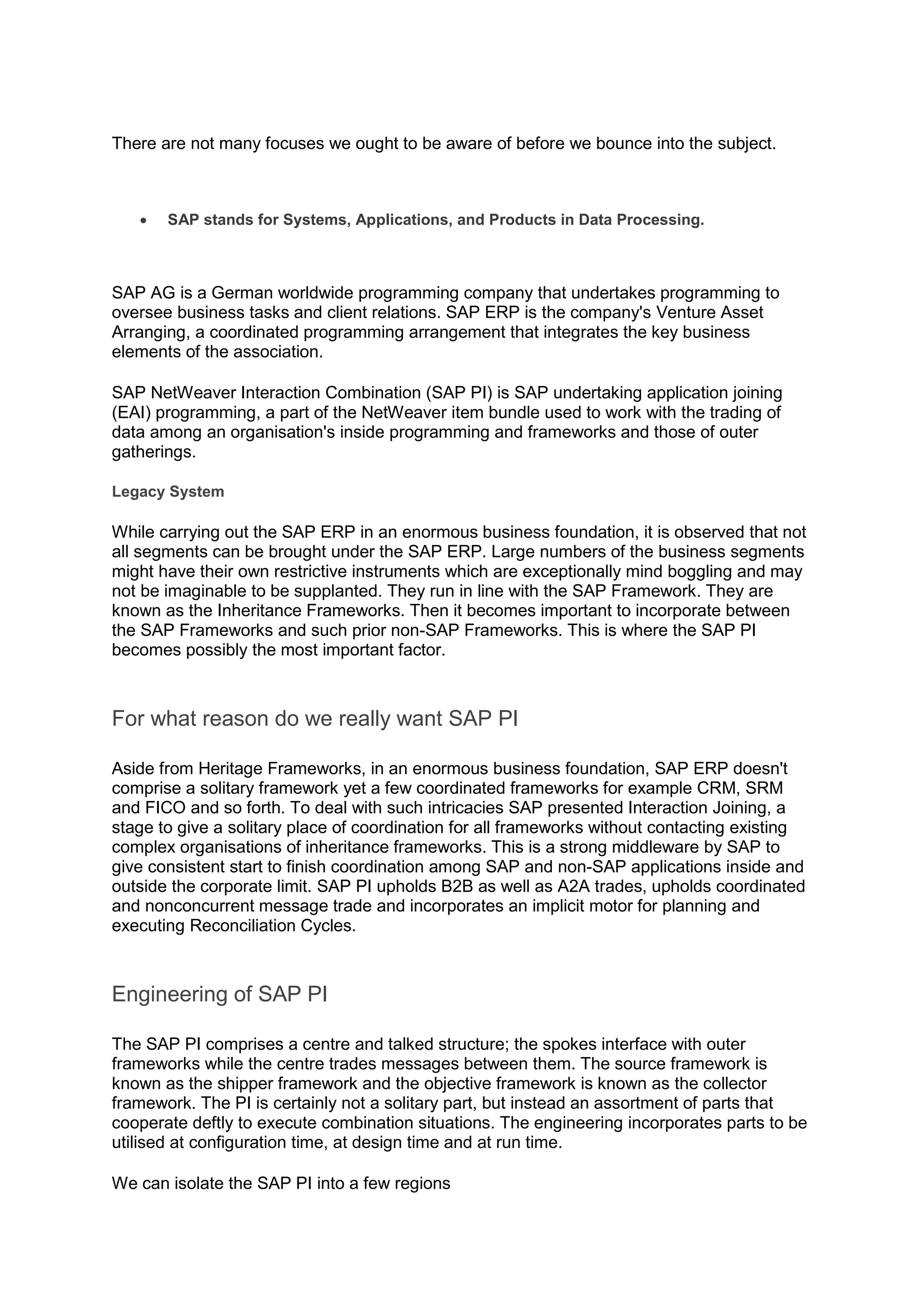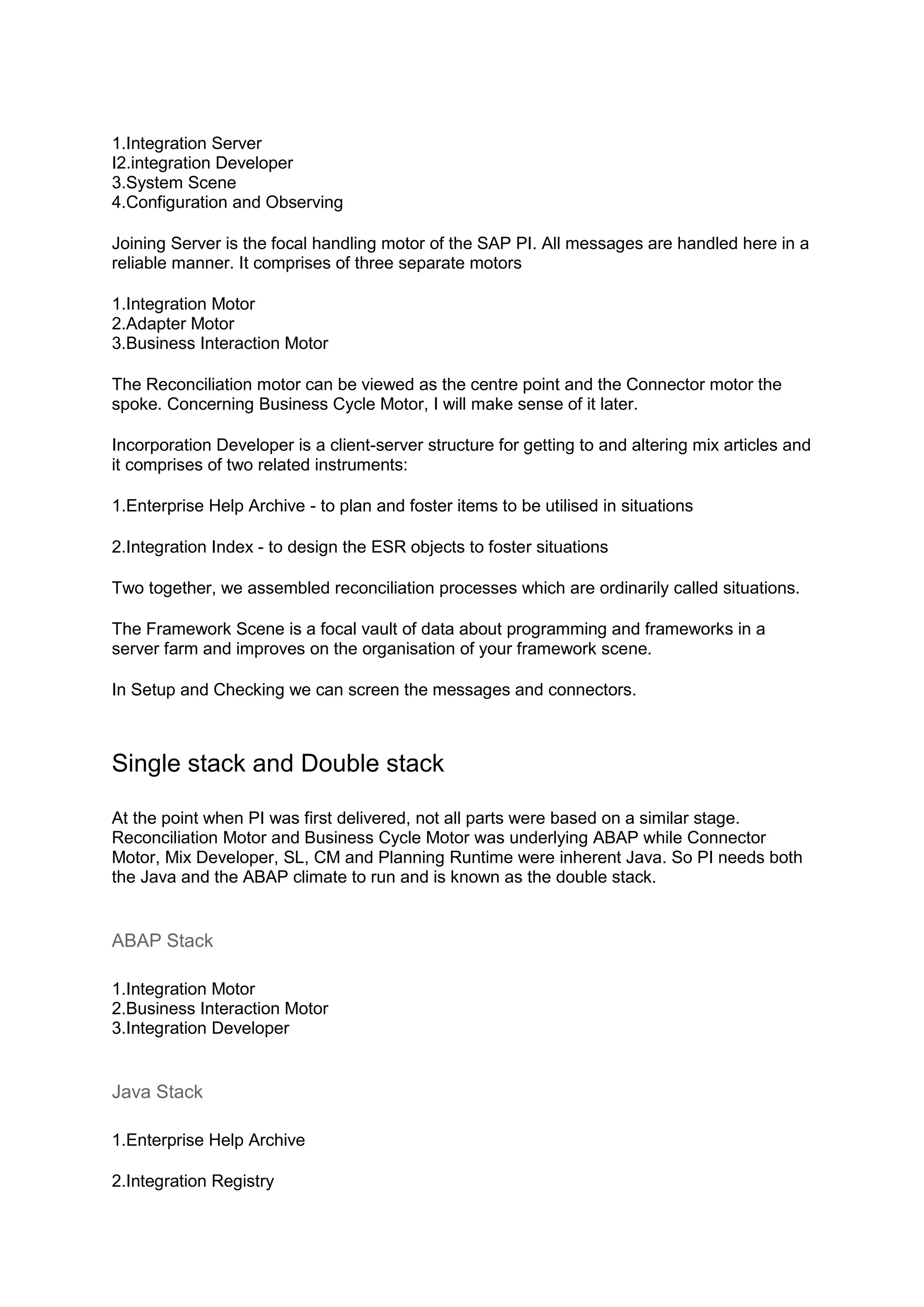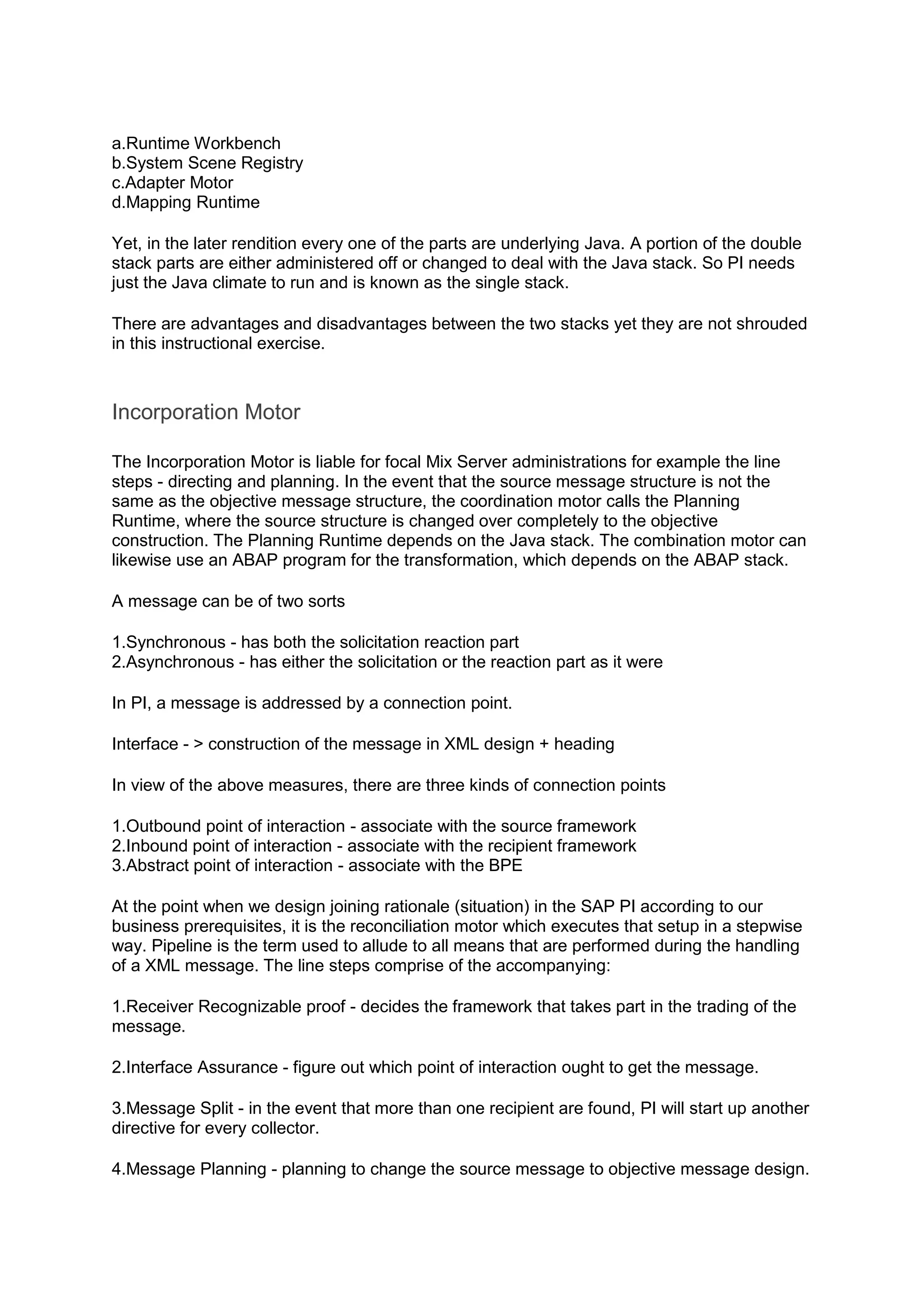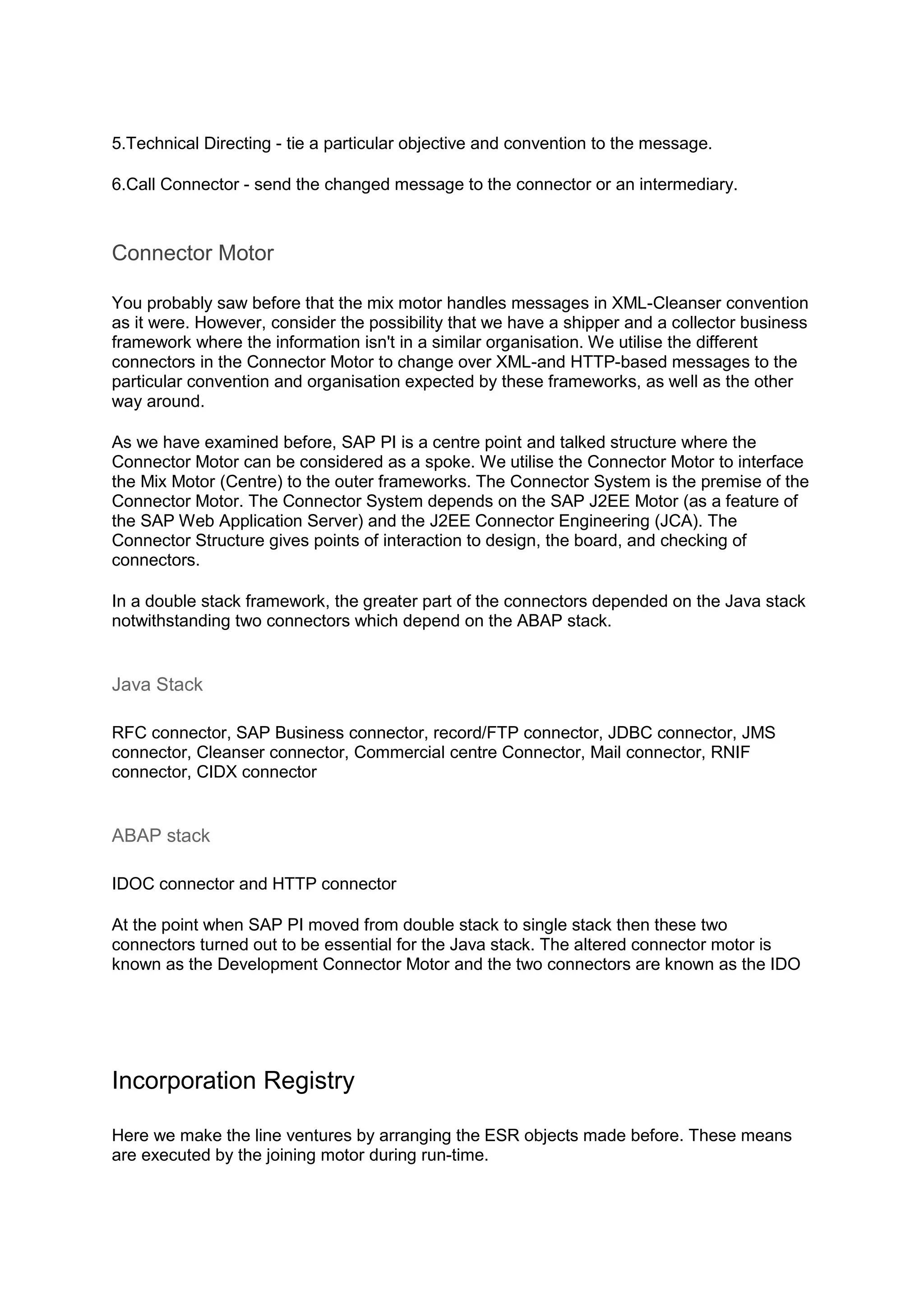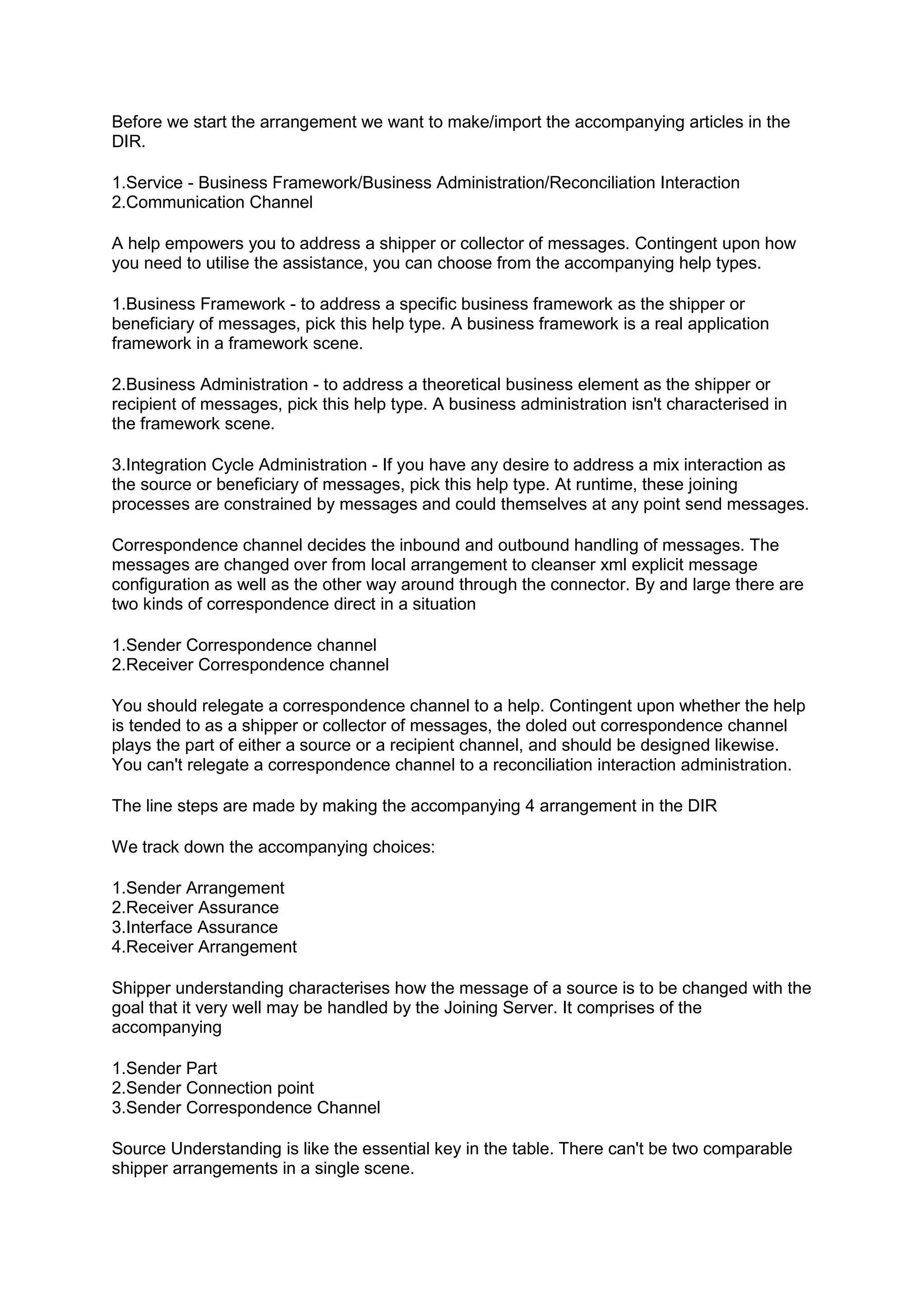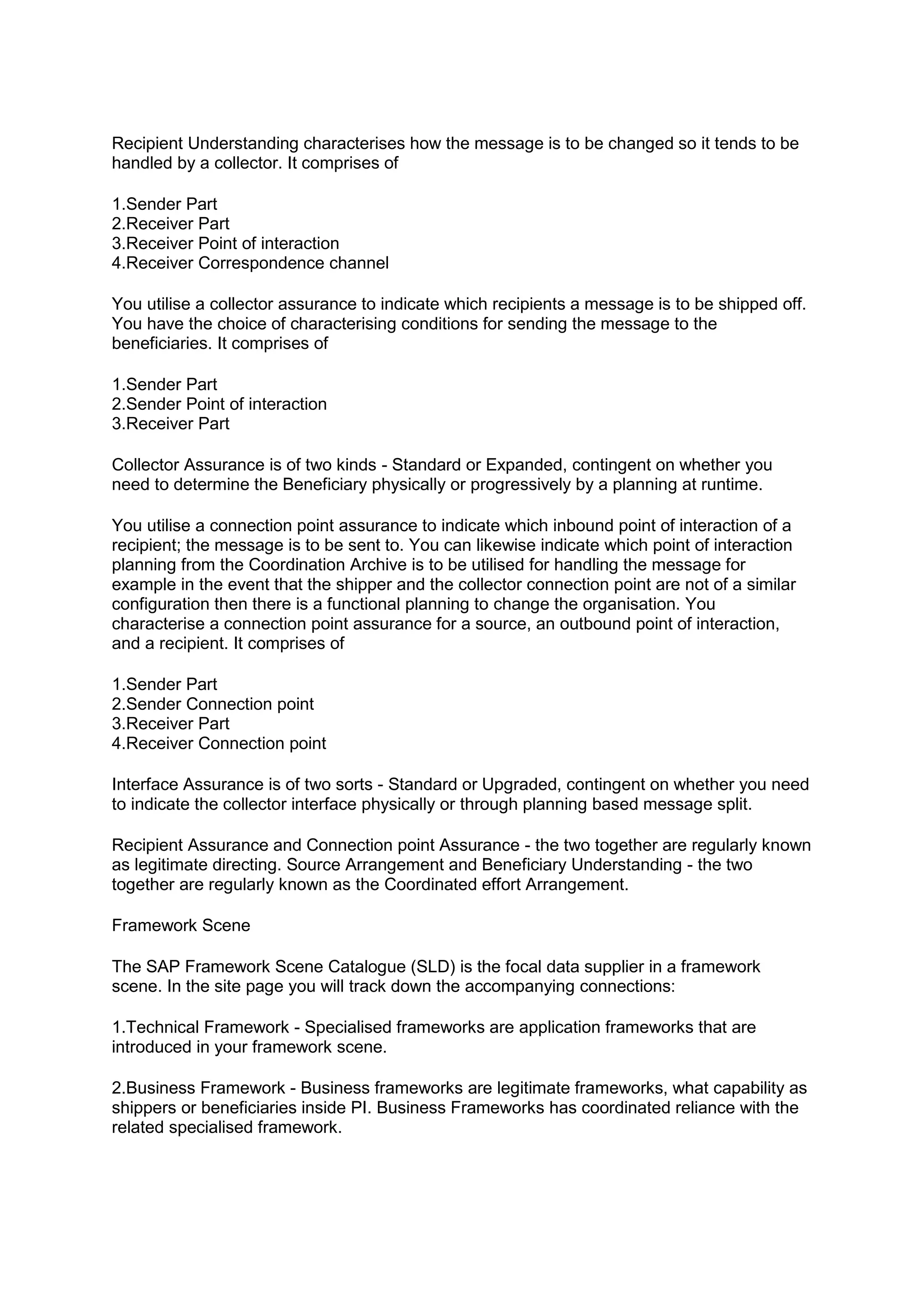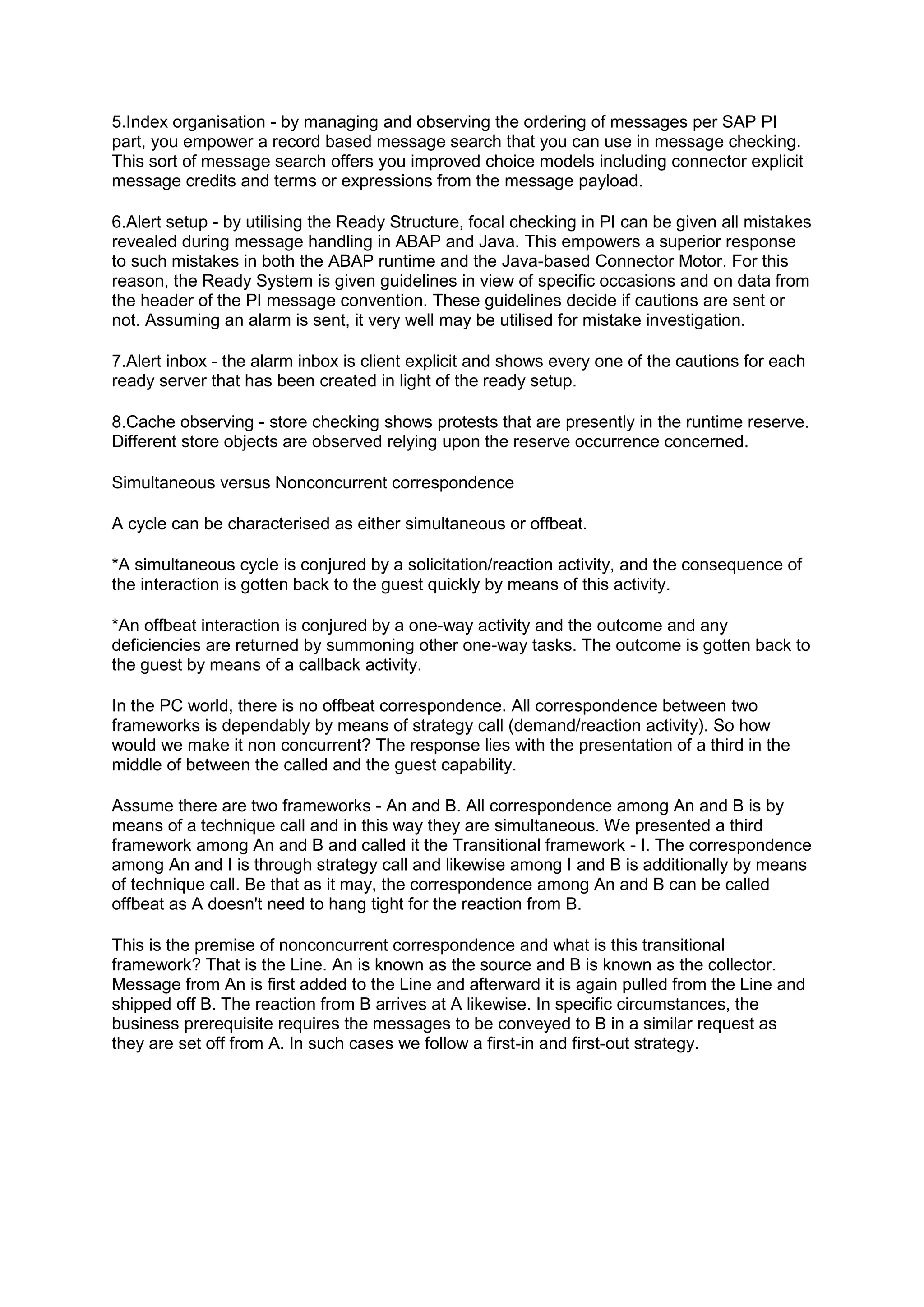The document provides an introduction to SAP PI (Process Integration) and its significance in integrating SAP systems with non-SAP systems, especially in large business environments. It discusses the architecture of SAP ERP and SAP PI, including their core functionalities, business modules, and the importance of process integration for efficient operations. Additionally, it outlines various components, integration techniques, and monitoring capabilities essential for managing data exchanges and integration scenarios.

